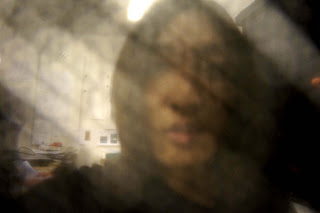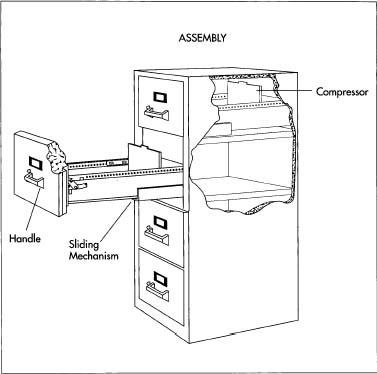
Tuesday, 7 December 2010
Monday, 6 December 2010
Friday, 3 December 2010
Colour of South Drawing Room: Turner's patent yellow
"Patent yellow, also known as Turner's yellow (PbC12. 5-7PbO) was patented by James Turner of England in February 1781, hence its name. Turner noted Scheele's discovery as applicable for, "a method of producing a yellow colour for painting in oil or water, making white lead, and of separating the mineral alkali from common salt, all to be performed in one single process" (Harley 1970, 91-92). The yellow pigment was made by grinding together, in water, two parts of lead (either red lead or litharge) and one part of sea salt. The mixture was allowed to stand for twenty-four hours. A caustic soda solution was poured off and the remaining white substance was heated (and dried) until it reached the desired shade of yellow.
Turner's patent did not prevent other manufacturers from copying his process. He sued one competitor and won the case on appeal in 1787. The case was published in books on patent law because it was won on a ruling that stated that if a patentee claimed to do several things by one process and one failed; the whole patent was void. In fact, Turner had listed several different names for lead and for the type of salt that could be used. Turner's competitor could not prove definitively that variations in the raw materials would not produce the pigment and Turner retained his patent.
A statute ordered by an Act of Parliament extended the time allowed to Turner as the sole manufacturer because competitors had taken his rightful income. It went on to state that Turner's yellow was superior and less costly than orpiment. It contributed to the National income of England and to the salt tax in that it was made from native raw materials.
Turner's yellow was widely used in England and regarded as durable and bright. It was sold at one shilling per watercolor cake in spite of a known tendency to blacken. Field claimed that it worked well in both oil and watercolor but noted its impermanence in sunlight.
In spite of the introduction of more permanent yellows in the nineteenth century, it was produced on a large scale. C. T. Kingzett, author of The History, Products and Processes of the Alkali Trade, 1877, recorded its production at a soda factory at Walker-upon-Tyne, England, where it was sold as Turner's Patent Yellow. At the Great Exhibition of 1851, an example of its use in oil was provided by the Washington Chemical Company of Washington, Durham, England (Harley 1970, 91-92)."
Still need to find somewhere to stock it. Can buy here (ebay).
Think this is the Green paint in the Loggia though.
Turner's patent did not prevent other manufacturers from copying his process. He sued one competitor and won the case on appeal in 1787. The case was published in books on patent law because it was won on a ruling that stated that if a patentee claimed to do several things by one process and one failed; the whole patent was void. In fact, Turner had listed several different names for lead and for the type of salt that could be used. Turner's competitor could not prove definitively that variations in the raw materials would not produce the pigment and Turner retained his patent.
A statute ordered by an Act of Parliament extended the time allowed to Turner as the sole manufacturer because competitors had taken his rightful income. It went on to state that Turner's yellow was superior and less costly than orpiment. It contributed to the National income of England and to the salt tax in that it was made from native raw materials.
Turner's yellow was widely used in England and regarded as durable and bright. It was sold at one shilling per watercolor cake in spite of a known tendency to blacken. Field claimed that it worked well in both oil and watercolor but noted its impermanence in sunlight.
In spite of the introduction of more permanent yellows in the nineteenth century, it was produced on a large scale. C. T. Kingzett, author of The History, Products and Processes of the Alkali Trade, 1877, recorded its production at a soda factory at Walker-upon-Tyne, England, where it was sold as Turner's Patent Yellow. At the Great Exhibition of 1851, an example of its use in oil was provided by the Washington Chemical Company of Washington, Durham, England (Harley 1970, 91-92)."
Still need to find somewhere to stock it. Can buy here (ebay).
Think this is the Green paint in the Loggia though.
Thursday, 2 December 2010
Steps

These are the measurements and general construction of the base for the steps (to be tested and adjusted as it is being built)
There might be some changes depending on the layer of reinforcement at the base of the frame (gravel or concrete) and interference with the plywood base of our opening
PS: Sorry small error on sketch, full height of lower step should be 200 not 400
Wednesday, 1 December 2010
Sixteen* Makers
 Couldn't really find better photos/website. This installation at Keilder used machine-folded steel. I like the articulated joints.
Couldn't really find better photos/website. This installation at Keilder used machine-folded steel. I like the articulated joints.Facebook pager here.
Tuesday, 30 November 2010
Gordon Pask Quote
It is clear that an aesthetically potent environment should have the following attributes:
- It must have sufficient variety to provide the potentially controllable novelty required by a man (however, it not swamp him with variety - if it did, the environment would merely be unintelligible).
- It must contain forms that a man can interpret or learn to interpret at various levels of abstraction.
- It must provide cues or tacitly stated instructions to guide the learning and abstractive process.
- It may, in addition, respond to a man, engage him in conversation and adapt its characteristics to the prevailing mode of discourse.
Smout Allen - Read the project description!

Retreating Village, Happisburgh
The cliff-top village of Happisburgh in Norfolk is falling into the sea. a retreating village is deployed in the disintegrating territory between the sea and the land. It adopts an architectural language of impermanence, of permeable screens, loose-fit structures that complement and contribute to the nature of the restless landscape.
Monday, 29 November 2010
Sunday, 28 November 2010
Friday, 26 November 2010
Thursday, 25 November 2010
Claude Glass
This is a description of a device used by artists in Soane's time to make images look more picturesque. Pretty cool.
Really similar to one part of the Privacy Device.
Monday, 22 November 2010
Susan Macwilliam

Wall mounted Headbox housing stereoscope and speakers.
Headbox, 2004, Temple Bar Gallery, Dublin 2004

Stereoscopes, 2001, Cornerhouse, Manchester. Photos from Susan Macwilliams website.
Using her research into mediums, hysteria and psychology, Susan MacWilliam uses video and photography to explore the paranormal and society’s response to it. Inspiration comes from perceptual phenomena, paranormal activity, with references to methods used in psychology, physiology, photography and a further interest in optical viewing devices as seen in her “Headbox” work.
Saturday, 20 November 2010
Privacy Device
 |
| Privacy Achieved |
 |
| Design so far... |
These are the design process of the privacy device.
Your head and arms go inside the device, so that your actions are not visible to others. Then you fiddle with a curtain-like screen so you can spy on others without being watched. Then someone comes (next guest) and opens the screen from the outside, intruding into your privacy and ruining your "moment".
Relationship between Soane Museum and Pitzhanger
Going from Museum to Pitzhanger Manor. 


Going from Pitzhanger Manor to Museum.

A small idea for what installation could do.
drawers open to frame a view
which slides to reveal a memory
which flips to reveal a reflection
which swings to reveal a relationship
which folds to reveal a narrative
which lifts to reveal your own position
Friday, 19 November 2010
John Huston Quote
John Huston American Director 1906-1987.
"You walk through a series of arches, so to speak, and then, presently, at the end of a corridor, a door opens and you see backward through time, and you feel the flow of time, and realize you are only part of a great nameless procession."
John Huston
John Huston
Subscribe to:
Posts (Atom)






































